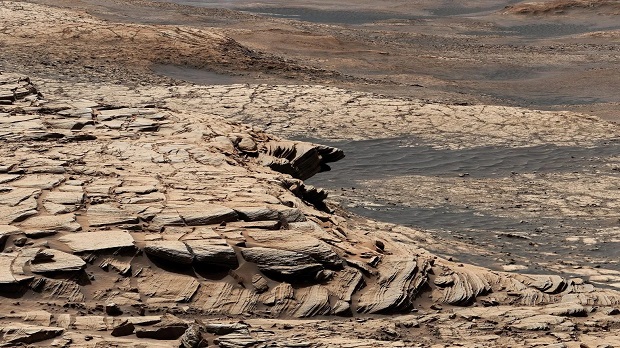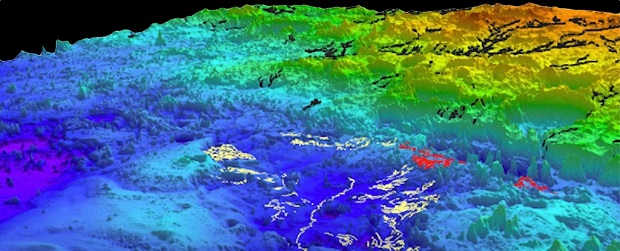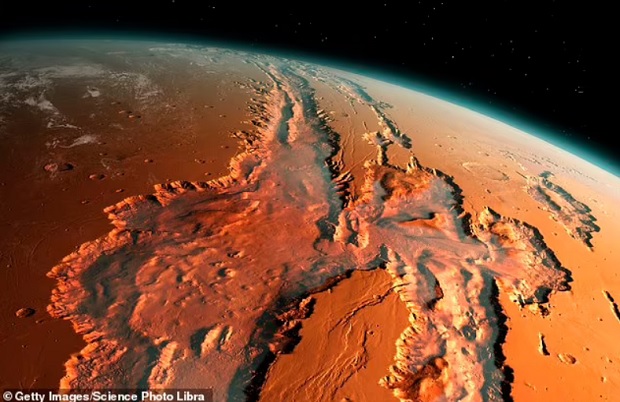
Ancient ocean traces found on Mars: Could there still be life on Red Planet?
You've probably seen the dry, dusty landscapes of Mars more than once in photos taken by NASA's Curiosity rover. Looks like the planet wasn't always like this!
Scientists at the University of Pennsylvania have found evidence of a big ocean on the red planet about 3.5 billion years ago.

According to a publication in the Journal of Geophysical Research: Planets, the ocean could occupy hundreds of thousands of square kilometers on Mars.
The outlines of the ancient ocean were discovered thanks to new topographic maps of the planet.
In the region of Aeolis Dorsa, scientists discerned over 6,500 kilometers of ridges, which are grouped into 20 systems. These structures are deltas of former rivers and underwater channels - remnants of the coastline.
Observations have shown that the relief is about 3.5 billion years old with a sedimentary layer of at least 900 meters that covered hundreds of thousands of square meters. The results suggest that the planet was once home to rising ocean levels, which corresponded to a prolonged warm and humid climate, not the kind you see on Mars today.

Were there ever favorable conditions on Mars for life to exist there? This is one of the most fundamental questions about the red planet, and it worries many scientists today.
New data show that conditions for life on Mars seem to have been present. Geologist Benjamin Cardenas of Pennsylvania State University agrees. According to him, the existence of a huge ocean on Mars raises the possibility that this planet had the potential for life. Moreover, the new data could tell us a lot about Mars' ancient climate and its evolution.
“What immediately comes to mind as one the most significant points here is that the existence of an ocean of this size means a higher potential for life,” said Benjamin Cardenas, assistant professor of geosciences at Penn State and lead author on the study recently published in the Journal of Geophysical Research: Planets. “It also tells us about the ancient climate and its evolution. Based on these findings, we know there had to have been a period when it was warm enough and the atmosphere was thick enough to support this much liquid water at one time.”
In another study published in Nature Geoscience, scientists, including Cardenas, applied the acoustic imaging method used to map the ancient seafloor in the Gulf of Mexico to a model showing how water might have eroded the surface of Mars. There are huge areas throughout Mars that could be river ridges, and the simulations the team created were remarkably similar to the shape of the landscape on the red planet, suggesting that there was once extensive water cover.

Another climate simulation study showed that about 3.7 billion years ago, simple microbes that fed on hydrogen and emitted methane may have lived on Mars. These microbes may be still there today, but they are in deep layers of the planet's crust. Or perhaps the methane released by these microbes after absorbing hydrogen caused the planet to cool (minus 60 degrees Celsius and below), which eventually led to the extinction of the microbes.
Scientists have also provided new evidence for the possible existence of liquid water beneath the southern polar ice cap of Mars, which may also show that there may once have been life on the red planet.
Images taken by the James Webb Space Telescope may also provide interesting data on the Mars atmosphere. A spectroscopic map shows that the planet absorbs carbon dioxide at several different wavelengths, and also shows the presence of carbon monoxide and water.
- Related News
- The end of the Universe: 3 plausible theories of a global apocalypse
- Mutated bacteria resistant to drugs found on the ISS: What does this mean and why is it a problem?
- 4 flares erupted from Sun in rare event: the Earth may be hit by geomagnetic storm (video)
- 11 incredible satellite photos published on Earth Day
- NASA shows all of Ingenuity's flight trajectories in one video
- Could life exist on Saturn's moon Enceladus?
- Most read
month
week
day
- Meta unveils Llama 3 and claims it's the "most powerful" open source language model 866
- Once in a lifetime phenomenon: This year we will observe a star explosion that occurred 3,000 years ago 859
- WhatsApp to integrate AI function: What will it do? 808
- Boston Dynamics introduces new version of Atlas robot that is completely electric։ Where will it be applied? 794
- Google fires 28 employees who protested against company's cooperation with Israel 785
- iPhone 17 Plus will have smaller screen 731
- 5 best smartphones with IPS screens 726
- How often is it worth replacing a smartphone with a new one? 694
- How DNA analysis helps to solve crimes and who can sell your DNA data and why: Interview with former FBI scientist Bruce Budowle 677
- Porsche unveils electric bike that costs more than $15,000: Why is it so expensive? 640
- Archive
